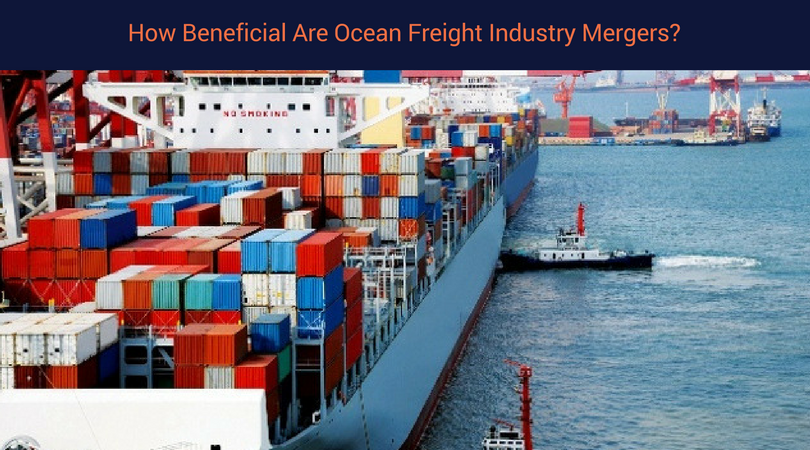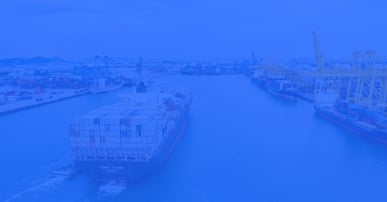If you look beyond the recent ocean freight mergers, it's a “black hole” for those of us who work daily with shipping rates and optimization of supply chain strategies. The ocean freight industry still appears to be reacting, for the most part. The ramifications of massive ocean freight industry changes—where major carrier lines either merged with other companies, entered into VSAs or simply bought out smaller companies to expand their resources and market shares—have seemingly helped raise container rates.
Contents
Chapter 1: Mergers & Acquisitions
Chapter 2: Will Joining Forces Help?
Chapter 3: Rationalizing Hindsight?
Chapter 4: Shippers: Odd Man Out
The question now becomes, just how “good” are these industry mergers for shippers in the long run? Can the industry thrive, as it struggles with ever-larger ships, worldwide ports that are often ill-equipped to handle larger vessels, consistently thin margins and constantly changing trade and consumption patterns? And will any post-merger economic benefits emerge for shippers?
Shipping Mergers & Acquisitions
Reaching critical mass, and forced with making a decision, carriers have finally resorted to what many industry analysts have predicted since the start of the capacity / demand imbalance. With some alarming acceleration, many major carrier lines are either merging with other companies and entering into VSAs or simply buying out smaller companies to expand their resources and market shares.
Will Joining Forces Help?
The new shipping alliances have set sail in April: THE Alliance, Ocean Alliance, and 2M. However, they haven't been without their challenges on service, port and terminal congestion, legislation on price collusion and more. Exporters from the U.S. fear that there will be fewer and larger vessels calling on small U.S. ports leaving them to pay high premiums due to less competition. Unfortunately, so far it seems that the shipping alliances may be causing more harm than good, Or perhaps, they need some time to settle in.
Rationalizing Hindsight
With the maritime industry becoming a feeding frenzy, as bigger companies gobble up smaller ones in the attempt to capture and hold enough of the market share to stay afloat, the industry as a whole will now have to answer to their decision for the mass merging as well as the investment in larger ships, a contributing factor to the current predicament.
“The onus is on the industry to demonstrate that the bigger ships and alliance business model is the best response to the economic and financial challenges faced by carriers, but also adds value to customers,” says Chris Welsh, secretary general of the Global Shippers Forum (GSF). “We believe cooperation between the main international stakeholders in a new maritime industries forum would enable the wider maritime supply chain to develop solutions to the problems presented by bigger ships and alliances in a constructive and consensual manner.”
The GSF is looking to establish a “Maritime Industries Supply Chain Forum” on an international level, to bring the industry as a whole together to explore, address and ultimately correct the issues plaguing the industry.
With container rates for the Asia-Europe route on a rise, 2017 is turning out to be a much healthier year for carriers. Mergers and acquisitions may have played a hand for suppliers where they may be reporting positive numbers in Q2.
However, when things go well for carriers, how is it for shippers?
Shippers: Odd Man Out?
The reality is, the spate of ocean freight industry mergers has not—and may never--help to increase productivity or economies of scale that trickle down to shippers (or provide better pricing or supply chain results or even capacity). Essentially, there’s no evidence to prove it. A recent Harvard Business Review blog notes that:
- Record levels of merger and acquisition (M&A) activity raise concerns about industry concentration and its negative effects, adding that while much has been written to speculate about whether mergers improve or harm economic welfare, there is little empirical evidence supporting either side of the argument.
- There’s evidence that while mergers may raise profits, many fail to deliver efficiency gains that could increase overall prosperity.
- The minor increase in profitability comes from greater concentration of market power within a firm and if firms use that power to mark up prices, then the net effect on welfare can be negative.
- On average, mergers do not have a discernible effect on productivity and efficiency [and there is] no evidence for the consolidation of administrative activities that is often cited as a way in which mergers yield lower costs through economies of scale.
- By contrast, [there are] substantial average increases in the amount that firms mark up prices over cost following a merger, ranging from 15% to over 50%, depending on the control group
- Theory suggests that the market power effects of mergers are likely to be largest for horizontal mergers.
The Harvard research supports the long-standing doubts and uncertainties about the sustainability of ocean carrier mergers (or for that matter the building and sailing of enormous Triple Es, MSC Oscar or CSCL Globe) and their initial promises of productivity increases. This is epecially true when two firms in the same industry merge.
And there’s yet more uncertainty ahead for the rest of 2017, according to OECD maritime expert, Olaf Merk, who forecasts “... there will be only eight carriers left from the 2014 top twenty.” For its part, Alphaliner expects that by 2018, there will only be 14 carriers and half of them will move 65% of the world’s cargo.
Most shippers and their complex supply chain networks don’t have the luxury of simply turning on a dime. With fewer carriers and bigger ships making less-frequent calls at fewer ports, the question becomes will the trickle down affect shippers’ supply chain and inventory management approaches? Benefit air or even nearshoring? It’s all possible, given careful analysis and creative approaches to supply chain management.
But there are still many unknowns in this industry shakeout. We’re moving into uncharted waters far beyond the long-standing, business-as-usual “shipping industry narrative.” For us, the question is how to ensure shippers receive the best ocean freight rates despite uncertainty and manage change despite what appears to be a lack of choices.
Read more: What Additional Services Should Shipping Lines Offer?


-1.jpg)




